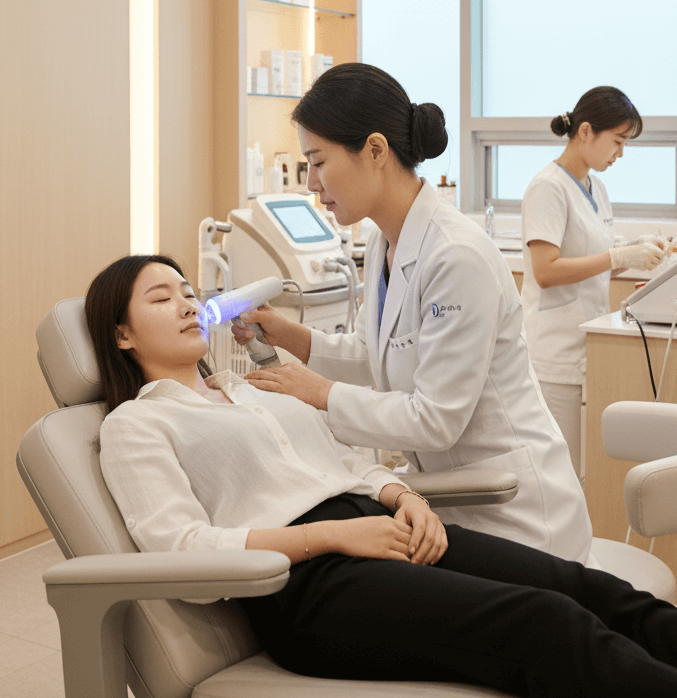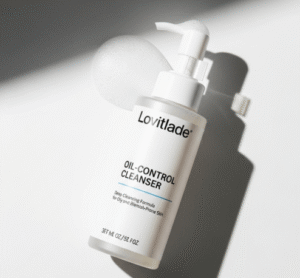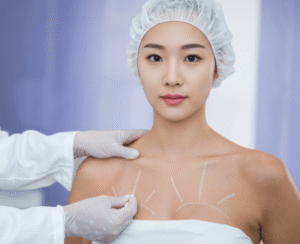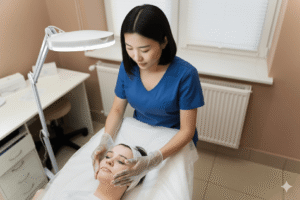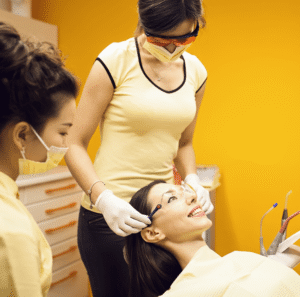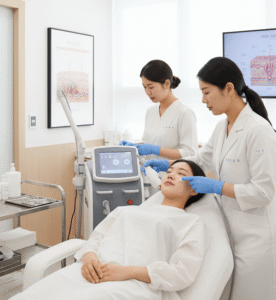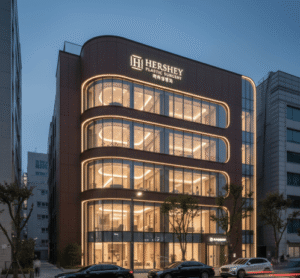Korea continues to lead the world in dermatology, combining advanced science, biotechnology, and aesthetics. From regenerative treatments to AI-assisted diagnostics, Korean experts are transforming skincare and medical dermatology into a precise, patient-centered discipline. Here are the most exciting innovations you should know about.
Cellular Aging Approach to Pigmentation Treatment
Korean dermatologists are redefining how pigmentation is treated. Instead of focusing only on reducing melanin, they are now targeting cellular aging mechanisms that cause uneven pigmentation and skin dullness. This approach uses a combination of laser toning, pulsed microneedle radiofrequency (RF), poly-D,L-lactic acid (PDLLA) injections, and topical therapies that rejuvenate the skin at the cellular level.
This multi-layered treatment reduces pigment recurrence and improves skin tone uniformity, offering longer-lasting results compared to conventional pigment correction methods.
Exosome Facials and Regenerative Skincare
One of the most talked-about trends in Korean dermatology is exosome-based skincare. Exosomes—tiny vesicles secreted by cells—carry growth factors, proteins, and genetic material that promote cell communication and regeneration. Korean clinics use exosome serums with microneedling and laser treatments to enhance healing, minimize inflammation, and boost collagen production.
These advanced treatments, often called “next-generation skin boosters,” bridge the gap between cosmetic skincare and regenerative medicine, helping skin repair itself naturally.
Advanced Dermal Fillers and Botulinum Innovations
Korean researchers and biotech firms are creating next-generation fillers and botulinum formulations designed for greater precision and safety. New technologies in cross-linking and hybrid formulations combine hyaluronic acid with biocompatible microspheres, giving smoother, longer-lasting results.
At the same time, medical device manufacturers are designing non-invasive aesthetic systems that complement injectable treatments—offering skin tightening, lifting, and contouring without surgery. This synergy between technology and clinical technique is one reason Korean aesthetic medicine is highly respected worldwide.
Multi-Lamellar Emulsion (MLE) Technology
Korea is also leading in biomimetic skincare. One of the most influential innovations is Multi-Lamellar Emulsion (MLE) technology, which mimics the natural lipid layers of the skin barrier. By restoring the skin’s structure, MLE products help improve hydration, soothe irritation, and strengthen sensitive or damaged skin.
This type of barrier-repair skincare is widely used in hospitals and dermatology clinics for patients with eczema, rosacea, or post-procedure recovery.
AI-Assisted Skin Imaging and Diagnostics
Korean researchers are integrating artificial intelligence with dermatologic imaging to make diagnosis faster and more accurate. AI algorithms can now analyze skin lesions, wrinkles, or pigmentation from high-resolution images, offering instant insights that assist dermatologists in diagnosis and treatment planning.
Reflectance confocal microscopy (RCM) combined with AI enables non-invasive detection of early skin changes, reducing the need for biopsies. This represents a major step toward precision dermatology and personalized care.
Integration of Technology and Clinical Devices
Korea’s medical technology companies are creating devices that are now used in clinics around the world. These include systems for skin tightening, rejuvenation, resurfacing, and lifting—using ultrasound, radiofrequency, and laser energy.
Many dermatologists are combining these technologies with injectable and regenerative therapies to offer customized “skin rejuvenation protocols.” This integrative approach produces more natural results with shorter recovery times.
Strong Collaboration Between Clinics and Brands
A defining feature of Korean dermatology is the tight collaboration between clinics, research centers, and skincare brands. Dermatologist-led companies create cosmeceutical products that bridge clinical research and consumer skincare. Clinics in Seoul’s Gangnam and Cheongdam districts often serve as innovation hubs, testing new devices, fillers, and skincare formulations before they reach the global market.
Events like Korea Derma and K-Beauty Expos highlight cutting-edge developments, from calcium hydroxylapatite (CaHA) boosters to regenerative procedures using growth factors and bioactive peptides. This ecosystem fuels continuous innovation and keeps Korean dermatology ahead of global trends.
The Future of Korean Dermatology
Korea’s dermatology field is moving toward precision and regeneration, using tools such as AI, exosomes, and biocompatible materials to promote skin health from within. Future advances may include personalized skincare based on genetic data, 3D-printed skin grafts, and smart diagnostic devices that analyze skin conditions instantly.
By merging beauty, biotechnology, and medicine, Korea is not just redefining skincare—it’s shaping the global future of dermatology.

